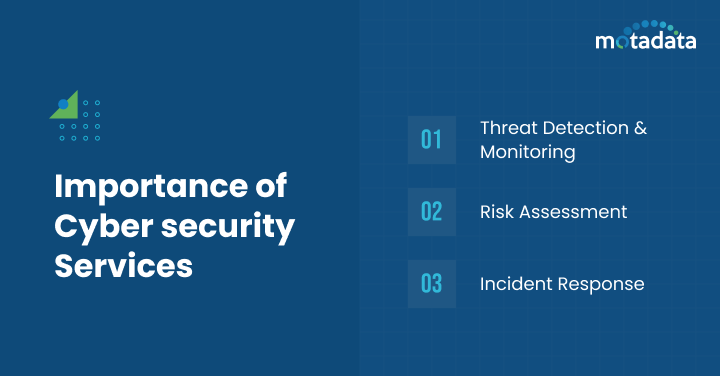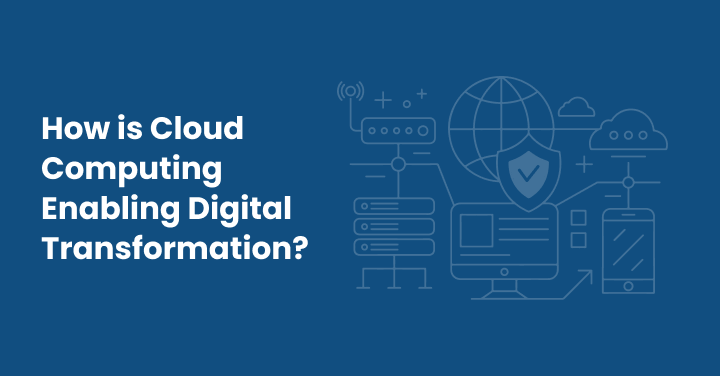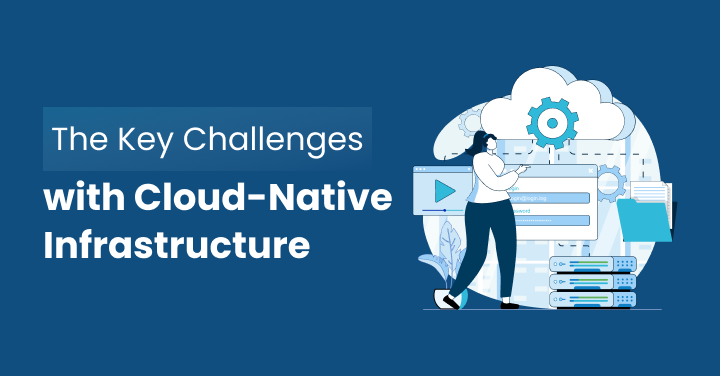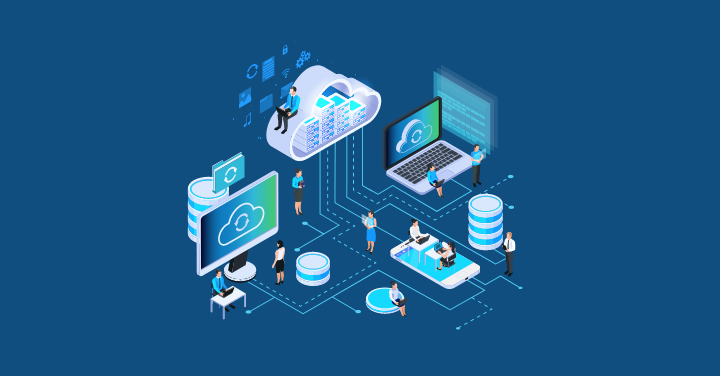Over the years, organizations in the United States have adopted emerging technologies in the markets in new ways.
Every company today is desperately trying to implement examples of digital transformation through a digital transformation framework with new technologies in its operations to enhance business value and gain a competitive advantage.
Key features of its ongoing digital transformation efforts include best practices like efficiency gains, better customer experience, and personalized marketing campaigns as new business models.
This kind of change is termed digital transformation due to its occurrence at a faster pace. However, it also comes with certain drawbacks in its field, specifically cybersecurity.
In an environment where companies work in a digitized format, they are exposed to threats and attacks from cyber criminals. Thus, this blog post will discuss cybersecurity services‘ efforts to protect businesses throughout their digital transformation processes.
Understanding Cybersecurity in Digital Transformation
Digital transformation means utilizing digital technology in all fields of business, including digital data management. It revolutionizes the nature of firms and how organizational resources are mobilized in creating and capturing value for clients, including developing new products that align with business goals.
Consider these digital transformation trends as successful digital transformation involves digital leaders embracing this revolution, taking serious steps to incorporate advanced technologies and, hence, reimagine the models and business functions for competitiveness, leading to significant business transformation.
According to a report from Harvard Business Review, effective change management is crucial during this process to address resistance and support teams.
However, depending on computer systems, the business takes a higher risk of being attacked by hackers and other related risks. Cybersecurity digital transformation is all about practicing security of the resources owned through the new World Wide Web.
It encompasses implementing security measures that will help guard against cyber threats. These include viruses and worms, trojans and ransomware, phishing, and data breaches, respectively. The global trends in digital transformation are nevertheless overshadowed by threats when there isn’t adequate cybersecurity.
The Growing Impact of Cyber Threats
The current statistics reveal a worrying story. Cyber-attacks have significantly jumped worldwide in just the past year. Even more concerning is that these attacks now happen every few seconds and do not just target big companies.
Small businesses increasingly find themselves in the sights of cyber criminals, with nearly half of all attacks now aimed at smaller organizations for better business outcomes.
The cost of these attacks is shocking! When a company suffers a data breach, it faces substantial monetary losses and a dent in revenue growth.
The Digital Transformation Journey
Digital transformation is not just the use of technology; it is the reinvention of digital businesses and organizations and how they create value for customers and foster strong customer relationships through digital innovation, and enhance user experience through customer interactions.
This is a journey of updating outdated processes, implementing the cloud, automating, and building new digital offerings to ensure transformation success.
However, each step in this journey is followed by other security issues that organizations must overcome to reduce risk in their technology and digital investments.
Read Also: What Are the 5 Challenges Associated with Digital Transformation in Banking?
Major Cyber Threats in Today’s Digital Landscape
The Rising Threat of Ransomware
One of the biggest threats businesses face today is ransomware. These attacks have become increasingly smart, as criminals lock companies out of their important data and threaten to release sensitive information publicly if demands are not met. The criminals behind these attacks are getting smarter, as they often target backup systems to ensure companies have no choice but to pay them.
Evolution of Phishing Attacks
These attacks have also evolved beyond simple spam emails. Today’s cybercriminals craft convincing messages that look like they are from trusted sources – maybe your boss, your bank, or a familiar business partner.
They might reach out through social media or even text messages. These attacks are hazardous because they target people, not just computer systems. All it takes is one employee clicking on the wrong link to give criminals access to an entire company network.
To counter such risks and improve email deliverability while ensuring secure communication, it’s crucial to maintain good email practices. This includes avoiding common pitfalls like using purchased email lists or failing to clean up inactive addresses, which can inadvertently lead to vulnerabilities like spam traps.
Cloud Security Challenges
The move to cloud computing has created new challenges for cybersecurity. While the cloud offers fantastic business benefits, it also introduces new risks. Simple mistakes in setting up cloud services leave sensitive data exposed.
Many companies need help controlling who has proper access to their cloud resources. Hence, poorly secured connections between cloud services create security gaps that criminals quickly exploit.
Continuous monitoring plays a critical role in identifying vulnerabilities before they can be exploited, ensuring that unauthorized access or unusual network activity is swiftly detected.
A well-implemented network monitoring system provides real-time insights, preventing security gaps that could lead to data breaches. To make an informed choice, many businesses rely on trusted platforms like G2 to compare the best solutions.
Mobile Security Threats
As more and more workers plug into their organizations from home and on the go, especially with the rise of remote work, securing mobile endpoints is now paramount in the landscape of technology adoption and shifting the status quo.
Naturally, dangers include viruses on mobile devices, non-secure Wi-Fi networks, or lost/stolen devices. Mobile devices bring new challenges and risks to the corporate world, so organizations need to adopt strong mobile device management solutions and or set out definite policies on mobile security.
Denial-of-service (DoS) Attacks are widespread and destructive cyber-attacks in which an attacker floods a target machine or network resource and denies it to its legitimate user.
Typical or more common forms of DoS involve sending so much traffic to a particular system that the server either crashes or runs very slowly.
This has led to various categories of DoS attacks, each with specific features and implementation methods. For example, the Distributed Denial-of-Service (DDoS) attack strategy involves multiple systems containing infected code running simultaneously to attack the intended target.
These attacks are most difficult to stop because of the numerous attacking devices combined with the problem of blocking malicious traffic with minimum impact on legitimate users.
The consequences that result from DoS attacks are rather dramatic. They can cause huge losses since several businesses, such as e-businesses, banks, and similar companies, base their transactions online.
Thus, organizations must employ strict measures against cyber security to guard against DoS attacks.
These measures include using anti-DDoS technologies, which may consist of detection and prevention of the actual DDoS attacks, employing cloud services standards for sudden increases of traffic and employing network redundancy techniques to guarantee service continuity.
Insider Threats
These threats are unique because they come from a company, making it hard for other firms to notice or do something about it. Another critical yet often overlooked area is Service Account Security.
Unlike other cyber risks, insider threats comprise of people who are legally allowed to access an organization’s systems and information.
These insiders can be members of the organization’s staff, contractors, or business partners with authorized access rights to the information system and who intentionally or accidentally engage in harmful activities.
There are two main categories of insider threats: intent and gross negligence. Insiders act with malicious intent, that is, to steal sensitive information, hinder operational systems, or even commit fraud.
They may operate out of self-interest, revenge, or to relinquish pressure from other sources. Instead, negligent insiders can unknowingly compromise organizational security through poor compliance with security standards, expose the firm to phishing scams, or mislay confidential information.
Insider threats can be very destructive for a business. Insider-generated data breaches entail theft or leakage of knowledge assets, compromise of sensitive information, financial loss, and probable regulatory actions.
In addition to this, insider threats are likely to reduce the social capital of the organization’s entitle members and negatively affect relations with clients and partners.
Importance of Cyber security Services
Outsourced cybersecurity services are essential in defending businesses from cyber risks and enabling a seamless transition to digital operations.
If you’re unsure about managing cybersecurity tasks on your own, consider exploring various listing platforms like G2, Sortlist, Clutch, and Capterra to find companies that specialize in providing top-notch cybersecurity services.
These services embrace practices like threat identification, risk evaluation, and incident response. Through these services, companies prevent security risks and minimize the effects of cyber threats.
- Threat Detection and Monitoring: Security services involve automating various activities to oversee novel devices and programs with sophistication to detect threats. This real-time detection enables identification and response to cyber incidents, thus ensuring minimal damage is caused.
- Risk Assessment: Risk assessments are also performed systematically to enable companies to determine the security risks within their operations. Quite simply, once understood, there are ways to proactively fortify businesses against threats.
- Incident Response: When it comes to cybersecurity threats, the organizational incident response plan is essential. Security service providers specialize in managing security incidents. This ensures a swift and effective response to minimize disruption and recovery time.
Essential Security Measures for the Digital Age
Implementing Zero Trust Security
The old approach of trusting everything inside the company network and blocking everything outside no longer works. Modern cybersecurity verifies every user and device every time they try to access company resources. This approach, known as “Zero Trust,” helps protect against external threats and internal security problems.
The Critical Role of Employee Training
An often-overlooked field that requires more attention is one of the critical roles of employee training. Training is essential to employee development, but, for some reason, it is always neglected.
Even having the best of security technologies implemented will only be successful if employees themselves are savvy to recognize risks. Cognitive training short meetings should help staff avoid phishing emails, and set a robust password by utilizing special characters and invisible characters.
Then, store the passwords, store it securely in an enterprise password manager, and work with sensitive information safely. This training should not be an annual event because cyber threats constantly change, and the employees’ awareness should be current.
Security Automation and Orchestration
Manual security procedures are inadequate in today’s rapidly evolving threat environment. Security automation and orchestration solutions enable organizations to address threats more effectively, minimize the impact of human factors, and manage numerous security alarms.
These tools self-identify threat vectors and trigger mitigation protocols, and some are capable of mitigating specific incidents on their own.
New Technologies and Their Security Risks
New risks appear due to the development of Internet of Things (IoT) devices in the business environment, including supply chain management and data analytics challenges.
Such devices typically lack incorporated security measures and are, in any case, challenging to update or patch. These endpoints are insecure and need to be patched, managed, network segmentation put in place, and monitored for threats by organizations deploying IoT.
Blockchain and Security
Employing block chain technology can seem to open new opportunities for protecting digital transactions and further preserving data. Blockchain can’t be used as a solution to fix all problems, but it can improve security in some fields, such as SCM, identity management, and secure data sharing between organizations.
Edge Computing Security
New security considerations arise as more organizations adopt edge computing to process data closer to its source. Immediate vicinity edge computing devices feature different protection measures than a centralized security paradigm.
Developing a cybersecurity strategy
Organizations require a cybersecurity strategy to adopt and follow to maintain cybersecurity during digitization. This strategy should dovetail with the organizational strategy and should be incorporated throughout the Digital Transformation strategy.
Critical components of a robust cybersecurity strategy include:
- Risk Management: The risk management strategy includes identifying, evaluating, and resolving risk to enable the enactment of good control measures.
- Security Policies: Formulating and communicating security policies and practices, which employees and related stakeholders shall follow in the company.
- Employee Training: Sensitize the workers to the proper manner of handling organizational information and the need to follow the necessary security measures.
- Technological Solutions: Using high technology security measures like firewalls, encryptions, and intrusion detection systems to secure digital resources.
- Regular Audits: Requesting security evaluations to determine the company’s compliance with the standards and possible correlation with the improved ideas.
Advanced Protection Strategies
Comprehensive Data Protection
Data protection needs to be comprehensive. It entails ensuring that data items such as passwords are encrypted, critical data is backed up, and different persons are restricted from accessing certain types of information.
However, according to recent data backup statistics, less than 9% of respondents prioritize backing up work-related documents. This underscores the need for individuals and organizations to place greater emphasis on securing their professional data.
Businesses also have to monitor and ensure they comply with any legal requirements on data protection that differ from country to country.
Artificial Intelligence and Machine Learning in Cyber Security
AI and machine learning, including generative AI, are the new additions to the game plan in combating cybersecurity threats.
Such technologies may be referred to as mechanisms required to help identify trends that suggest that an attack is near and where the future threat sources can be estimated, not forgetting the aspects of response to any incidents that may occur, all of which the human resources and ability cannot provide in any way. These tools are not entirely practical, but they are a growing necessity in the world of cyber security threats.
Identity and Access Management
Strong identity and access management (IAM) is crucial in today’s digital environment. Organizations need robust systems to manage user identities, control resource access, and monitor user activities. This includes implementing multi-factor authentication, role-based access control, and privileged access management systems.
How Can Digital Transformation Benefit a Company?
Digital transformation can benefit a company by increasing operational efficiency, improving customer experience, enabling data-driven decision-making, and fostering innovation. It allows businesses to quickly adapt to changing market trends and stay competitive in the digital age.
Zero-Day Threat Protection
As zero-day threats become more common, organizations need advanced protection strategies. This includes implementing behavior-based detection systems and maintaining robust backup and recovery capabilities.
Conclusion
The difficult road to digital transformation is only sometimes necessary, especially for businesses with legacy systems. Cybersecurity needs to be addressed as something serious, and with corresponding protective measures taken, it is possible to integrate new technologies and opportunities into the business environment safely.
Therefore, the question is how to continue pushing the boundaries of innovation while protecting relevant assets and information simultaneously.
As the above blog explains, cybersecurity is defending against attacks and managing an organization today and tomorrow. Those who manage cyber threats well shall be in a better place to capture new opportunities while at the same time keeping or regaining the trust of their customers and partners.
As we witness more of this kind of growth, we have seen in technology the ability to secure business operations while being creative, which will be even more vital.
FAQs:
Digital transformation refers to integrating digital technology into all areas of a business to enhance operations and deliver more value to customers. It is crucial for staying competitive and meeting evolving market demands.
Cybersecurity ensures that as companies adopt new digital technologies, their data and systems remain protected from cyber threats, supporting seamless and safe innovation.
AI and machine learning enhance cybersecurity by enabling real-time threat detection, automated response systems, and predictive analysis to identify potential vulnerabilities.









